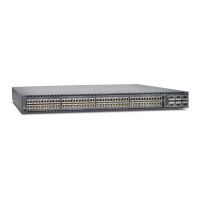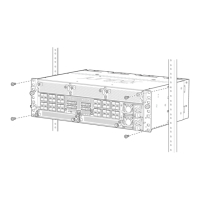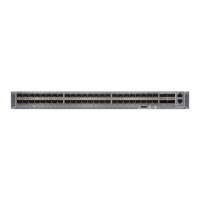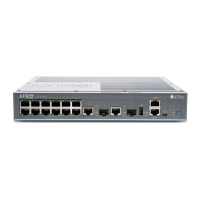Table 1: ACX Series DC Power System Input Voltage
(Connued)
Nominal Voltage Specicaon
–48 Operang range: –39 to –56 VDC
–60 Operang range: –39 to –72 VDC
1. Aach an electrostac discharge (ESD) grounding strap to your bare wrist, and connect the strap to
one of the ESD points on the chassis. For more informaon about ESD, see the
ACX1000 and
ACX1100 Universal Access Routers Hardware Guide
.
2. Switch o the dedicated customer site circuit breakers. Ensure that the voltage across the DC
power source cable leads is 0 V and that there is no chance that the cable leads might become
acve during installaon.
3. Remove the clear plasc cover protecng the terminal on the faceplate.
4. Verify that the DC power cables are correctly labeled before making connecons to the power
supply. In a typical power distribuon scheme where the return is connected to chassis ground at
the baery plant, you can use a mulmeter to verify the resistance of the –48V and return DC
cables to chassis ground:
For –48V and –60V:
a. The cable with very large resistance (indicang an open circuit) to chassis ground is the DC input
cable (–).
b. The cable with very low resistance (indicang a closed circuit) to chassis ground is the return
cable (+).
For +24V:
a. The cable with very low resistance (indicang a closed circuit) to chassis ground is the DC input
cable (–).
b. The cable with very large resistance (indicang an open circuit) to chassis ground is the return
cable (+).
5. Remove the screws and at washers from the terminals.
6. Secure each power cable lug to the terminal with the at washers and screw (see Figure 10 on page
16). Apply between 8 lb-in. (0.9 Nm) and 9 lb-in. (1.02 Nm) of torque to each screw. Do not
overghten the screw. (Use a number 2 Phillips screwdriver.)
a. Secure the posive DC source power cable lug to the return (+) terminal.
b. Secure the negave DC source power cable lug to the input (–) terminal.
14
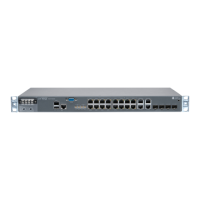
